NIL
College Athletes Are Getting Paid. Here’s What to Know.
College athletics has always been a business, but now the game has changed. Following Friday’s final approval from U.S. District Judge Claudia Wilken settling a trio of antitrust cases against the NCAA and power conferences—commonly referred to as the House settlement—college athletes are set to be paid, yes paid, directly from their universities. The notion […]
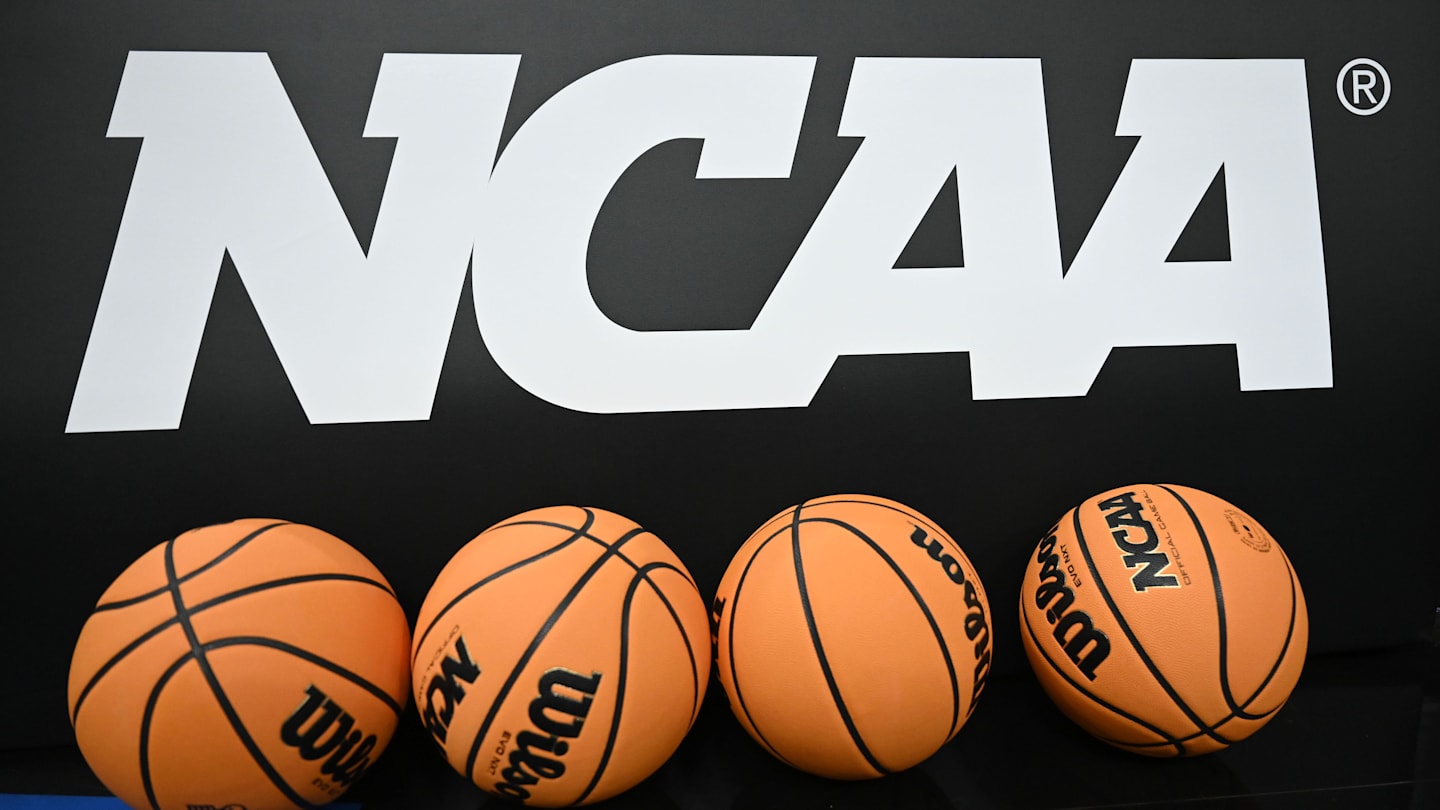
College athletics has always been a business, but now the game has changed.
Following Friday’s final approval from U.S. District Judge Claudia Wilken settling a trio of antitrust cases against the NCAA and power conferences—commonly referred to as the House settlement—college athletes are set to be paid, yes paid, directly from their universities. The notion of amateurism isn’t quite dead, but it’s pretty much been put out to pasture.
What do you need to know about this historic settlement? Here are key answers to common questions about this turning point in college athletics.
In 2020, Arizona State Sun Devils swimmer Grant House became the lead plaintiff in a lawsuit challenging the NCAA’s rules surrounding name, image and likeness. An injunction was issued that would allow for the sharing of broadcast revenue that was received by the various conferences. This antitrust case eventually wound its way through the court before a settlement was announced between the associated parties in ’24, which the judge approved of in June.
In addition to millions of dollars in damages related to backpay of NIL rights for athletes as far back as 2016, the $2.8 billion settlement also calls for revenue sharing directly with athletes for the first time. While the agreement covers the next 10 years, it remains clear to all involved that there is no putting this genie back in the bottle and this will be the norm moving forward.
Schools are permitted to share up to $20.5 million with athletes each year. How that money is divided up lies with the schools, but most are expected to follow a similar formula as the back-damages payout with 75% directed toward football, 15% to men’s basketball players, 5% going to women’s basketball players and 5% to the remaining players.
“We’ve talked a little bit about individual sports but we haven’t set exact percentages,” ACC commissioner Jim Phillips said. “I know for all five of us [power conferences], no one is forgetting about their Olympic sports and continuing to make sure that we invest at a high level for all our sports.”
Even within those tiers, the money is expected to vary widely, with the star quarterback naturally expected to make many more times than what the school hands out to the sixth man on the basketball team.
“It is a campus decision,” reiterated Big 12 commissioner Brett Yormark.
Perhaps the most tangible of aspects to the settlement is the arrival of roster limits. While in the past schools were capped in terms of the number of scholarships they handed out for a particular sport—the limit in FBS football being set at 85 for the past several decades—will soon be replaced by a hard ceiling in terms of the number of players they have on a team. This can result in some sports seeing both more players involved and the option of receiving full scholarships instead of partial ones. However, there may wind up being a reduction in certain spots. Only a handful of power-conference schools have announced plans to fully expand their rosters to include the maximum amount of scholarships handed out. Most major universities are planning to expand their athletic offers in some form or another starting as early as this fall.
Business in the NIL world is set to change significantly as a result of the settlement, with the current Wild West being replaced by a structured workflow for deals, players and the schools—which can now also help players get additional NIL deals. The most notable new change is that for any deal signed by athletes with a value of over $600, the details must be sent to a new, third-party clearinghouse dubbed NIL Go. The entity is being run by consulting firm Deloitte and will attempt to regulate the market somewhat by determining whether deals are within a range of the nominal fair market value.
For example, a Heisman Trophy–winning quarterback at a team in Los Angeles is going to get a higher-end deal than a backup left guard in a Midwestern college town. If anything ranges beyond such limits, such as some of the current deals with school collectives that are paying out millions to some players, those will get flagged by the system. Players can then either alter their payouts or structure of the deal, or take things to arbitration in order to get cleared. If it isn’t cleared, they could be suspended from playing.
Surprisingly, a lot. At the annual gathering of athletics directors and administrators in Orlando just a few days after the settlement was approved, a constant refrain in the wake of the ruling was that the broader set of athletic departments impacted by the settlement had been planning for its go-ahead for years. While true, there’s a difference between game-planning and executing a new multimillion enterprise for the first time in a 25-day span from start to finish.
Among key questions still to be fleshed out and publicized, there’s the matter of the College Sports Commission (CSC), a newly formed LLC set up by the power conferences to essentially administer the settlement’s finer points. At a high level, that means ensuring schools are in compliance with the overall cap to spend on athlete payments and will also include an oversight function when it comes to third-party deals sent through the NIL Go system. It includes building up a new enforcement arm, set to be overseen by the newly hired CEO, Bryan Seeley, a former MLB executive who will be tasked with handing out punishments that are supposed to range from fines to suspensions. While there are varying degrees of skepticism, the settlement provides an avenue for a school to see its revenue-sharing number decreased, its head coaches suspended and its players suffer an eligibility hit should any stray beyond the guardrails that are currently set.
Yep. The NCAA has wiped away hundreds of antiquated rules as of July 1 and all but turned over enforcement in college sports to the CSC with a handful of exceptions (eligibility, academics, rare instances like a sign-stealing scandal, etc.). When it comes to the bulk of issues that college sports has had in the past when it comes to paying athletes, the policing of such matters has been fully turned over to this outside entity with final decision making resting with Seeley.
“His experience is really unique. To have league experience was a big part of this,” said Big Ten commissioner Tony Petitti, who worked with Seeley at Major League Baseball. “Part of what we do is manage a lot of constituents and, in Bryan’s role, you’re dealing with 30 clubs and very competitive areas that he’s involved in in making decisions. That’s very similar to what he’ll have to do in this role. Decisions that get made by this enforcement entity, ultimately, will have competitive outcomes.”
“I am very confident in Bryan, Deloitte, LBiSoftware and the new model that’s in place so that we have a bright future in collegiate athletics,” Yormark added. “I’ll also say that our schools want rules. And we’re providing rules. And we will be governed by those rules. And if we break those rules, you know, the ramifications will be punitive.”
In short, nothing. There will still be noon kickoffs in the East every Saturday this fall and plenty of toes meeting leather late into the night each weekend. The biggest difference is likely to come in the bank accounts of those players who you see taking the field in football or the court in men’s and women’s basketball, most of whom will now be getting a paycheck with a university logo on it for the first time.
More lawsuits for one, with the settlement itself likely leading to a slew of incoming cases surrounding thorny issues such as Title IX and limits on compensation.
More pressing might be a push to get the settlement and some of the bigger changes in college athletics codified into law as part of an ongoing congressional push. Numerous leaders in college athletics have already made several trips to Washington, D.C., to discuss such issues with various elected officials, but tangible progress in such areas remains fleeting so far.
“They do have the ability to get things done, even in difficult political times,” SEC commissioner Greg Sankey said. “I think this is a nonpartisan issue, candidly. I don’t think this is about drawing lines between Democrats and Republicans, or the House and Senate. I think this is an opportunity for our governmental leaders, our political leaders, to come together around solutions.”
We’ll see if that winds up coming to fruition, but the bottom line is that college athletics has entered a new era and the ripple effects from the House settlement will reshape the future of the endeavor for many years to come.
More College Sports on Sports Illustrated
NIL
Trump set to sign executive order on national standards for college sports NIL
President Trump intends to sign an executive order in the coming days establishing national standards for the NCAA’s Name, Image and Likeness program, which has reaped millions of dollars in revenue for top college athletes, according to multiple people familiar with his plans. College athletes can now make millions before ever going pro thanks to […]
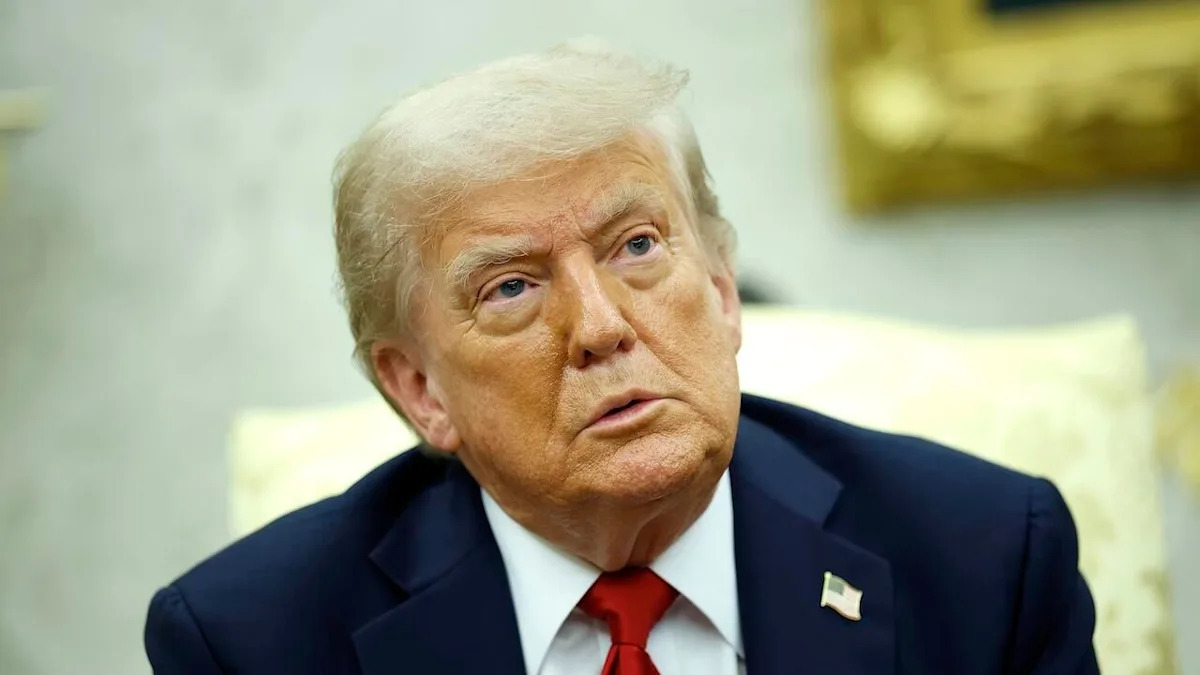
President Trump intends to sign an executive order in the coming days establishing national standards for the NCAA’s Name, Image and Likeness program, which has reaped millions of dollars in revenue for top college athletes, according to multiple people familiar with his plans.
College athletes can now make millions before ever going pro thanks to a set of NCAA rules enacted in 2021 that relaxed previous restrictions on being compensated for playing or accepting endorsement deals. Student athletes can now profit from merely showing up to play, or from jersey sales, autographs or serving as spokespeople for companies ranging from global brands to car dealerships near campus.
Advertisement
Mr. Trump is engaging on an issue that has quickly reshaped and, in many ways, roiled college athletics after a House subcommittee on Tuesday advanced a bill along party lines that would establish national standards for sponsorships. The legislation, called the “SCORE Act,” would supersede a patchwork of state laws regulating Name, Image and Likeness, or NIL.
While the bill has bipartisan support, there is also bipartisan concern it would give too much power to the NCAA and do little to protect the interests of college athletes.
The NCAA’s decision in 2021 to let athletes earn money from NIL deals followed years of political and legal pressure on the collegiate sports giant. For decades, the NCAA imposed steep limits on compensation for student athletes, which it argued were necessary to insulate college athletics from commercial pressures. But opponents — including many college athletes — had long argued the rules unfairly cut them out of the millions in revenue that sports like football and basketball can bring in for universities.
Last month, in a massive shakeup, a federal judge signed off on a legal settlement in which the NCAA agreed to let schools pay student athletes directly.
Advertisement
Trump has regularly engaged with professional and college sports of all sorts since and even before retaking office. Whether attending the storied Army-Navy football game last December or stealing the spotlight at last Sunday’s Club World Cup championship, the future of sports is a frequent presidential concern.
The White House didn’t immediately return requests for comment late Tuesday.
Trump pushes senators to make $9.4 trillion in spending cuts
L.A. Mayor Karen Bass says National Guard deployment in city was “a misuse” of soldiers
Mike Johnson breaks from Trump, calls on DOJ to release Epstein files
NIL
HBCU football coaches get real about transfer portal
MACON, GA — The SIAC, a Division II HBCU football conference, is feeling the ripple effects of the NCAA transfer portal, NIL, and House settlement decisions. During the league’s annual football media day, it seemed like everyone was talking about it. As Commissioner Dr. Anthony Holloman noted, the realities of modern college football have officially […]
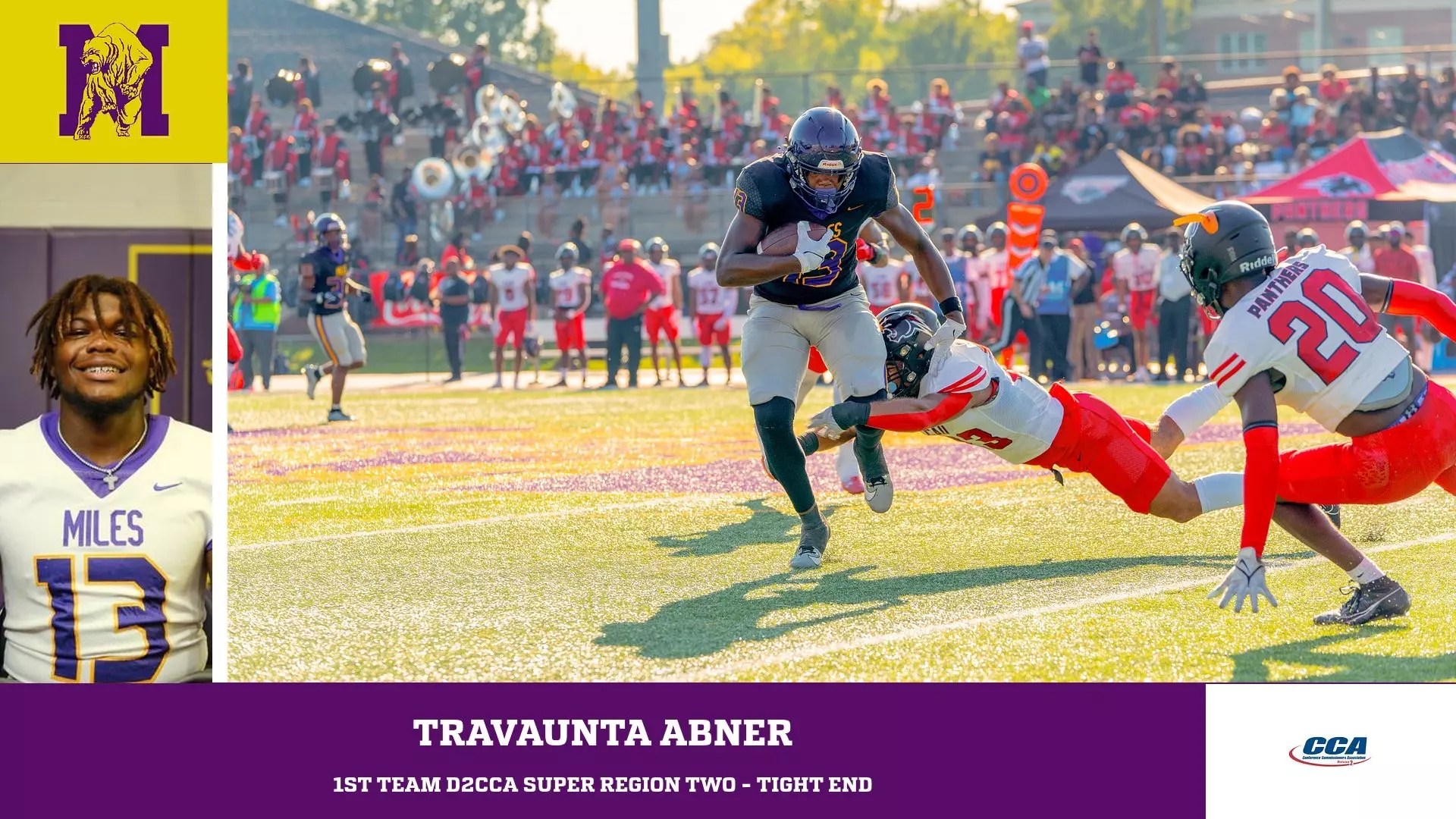
MACON, GA — The SIAC, a Division II HBCU football conference, is feeling the ripple effects of the NCAA transfer portal, NIL, and House settlement decisions. During the league’s annual football media day, it seemed like everyone was talking about it.
As Commissioner Dr. Anthony Holloman noted, the realities of modern college football have officially reached the SIAC’s front door.
“The House Settlement. The transfer portal. NIL payments. And you might say, what does that have to do with Division Two?” Holloman asked. “The reality of it is a trickle down effect. We’re not immune. We lost players to Division I programs like Purdue University, Duke University, North Carolina A&T, Alabama A&M just to name a few.”
Now more than ever, roster management is one of the most critical responsibilities for SIAC coaches.
A New Era at Miles College
That kind of talent loss is something Miles College head coach Chris Goode knows all too well. After taking over the defending SIAC champions this offseason, he inherited a roster nearly unrecognizable from the one that won the title. Many players followed former head coach Sam Shade to Alabama A&M, while others transferred elsewhere.
“It’s a brand new team,” Goode said. “We had a lot of guys that were seniors that left, got a lot of guys that went in the transfer portal. But one of the things I always tell the players—I’m not going to complain about it—because the thing is, we still got to go on the field and play to compete.”
Goode is relying on a veteran coaching staff with championship experience. But even with that support, managing constant roster turnover has become the new normal.
Tuskegee Faces Rebuild Year After Year
Tuskegee head coach Aaron James echoed that sentiment, saying rebuilding a team now feels like starting from scratch each season.
“It’s a different team every year,” James said. “Because like I said, the transfer portal going on, you not able to rebuild—you actually build your team. It’s a rebuilding roster every year.”
Even with Tuskegee’s rich football tradition, James said that doesn’t stop players from seeking bigger stages.
“Every year, they’re looking for that ladder,” he said. “Other schools, they’re looking at us like we the JuCo of the leagues now. If we have an All-American, all-conference guy, those guys are going to be going up.”

Roster Management Becomes Year-Round Priority
The challenge of roster management at an HBCU isn’t just about replacing players. It also requires building relationships and recruiting current team members to stay.
Allen University head coach Cedric Pearl put it plainly:
“The number one thing in today’s game is to recruit your own roster. Roster management is important.”
The veteran HBCU coach stressed the importance of maintaining strong internal relationships.
“Now it’s kind of a dual recruiting relationship where you have to continue to constantly recruit those guys on the inside,” Pearl said. “Even though we’re coaching them every day, staying engaged with them.”
But Pearl also acknowledged that some transfers are about more than football.
“We understand the power of the dollar,” he said. “Power of the dollar, for a lot of young men, changes lives, changes family situations.”
“Anybody that gives an opportunity to go to another university and better themselves and make a little money at the same time—we’re all for that,” he added. “That’s just today’s game and where it’s going. So you either get on board, or you get ran over.”
Related
NIL
Why Amani Hansberry is Virginia Tech’s most important team transfer for 2025-26
Three years have now passed with three straight finishes outside of the NCAA Tournament for Virginia Tech. The Hokies are coming off their worst season since head coach Mike Young took over in 2019. This team was pretty rough during a really down season for the ACC, though there’s hope that Young can get them […]

Three years have now passed with three straight finishes outside of the NCAA Tournament for Virginia Tech. The Hokies are coming off their worst season since head coach Mike Young took over in 2019. This team was pretty rough during a really down season for the ACC, though there’s hope that Young can get them back to the Big Dance for the first time since 2022’s ACC Tournament title.
The first good news is the return of leading scorer Toibu Lawal, a rising senior forward from England who was the only double-digit scorer for the Hokies. Lawal was also the top rebounder and a major piece to build around this season, though there’s a lot of new faces around him. Underclassmen like Jaden Schutt and Tyler Johnson return for bigger roles, but the Hokies will miss starters like Mylyjael Poteat and Jaydon Young.
A slew of freshmen talent enters the fold, including a pair of 4-star frontcourt players, but we’re looking more closely at the transfer portal haul. Young and his staff lost half a dozen names into the mix but aren’t leaning as heavily on new veteran talent. Former UNLV guard Jailen Bedford is the backcourt’s newest veteran while Izaiah Pasha comes to town after success with Delaware, though the third and final name will attract more attention.
Amani Hansberry is a 6-8 forward from Baltimore who was a Top 75 prospect back in the Class of 2023. He began his collegiate career at Illinois but saw mostly backup minutes as a freshman before transferring to West Virginia. Hansberry established himself in a more significant role with the Mountaineers, averaging 9.8 points and 6.5 rebounds last season, with decent efficiency especially on defense.
He wasn’t a notable prospect for no reason and the Hokies are hoping that he can take another big step forward now as an upperclassman. Hansberry pairs nicely with Lawal and could form one of the most viable frontcourt duos in the ACC. With the slew of new bodies in the backcourt, it’s even more important for Hansberry to take that measured step forward, becoming a reliable scorer, rebounder, and defender in the paint.
You could certainly argue that Bedford will be more important with all the moving pieces at guard, but Hansberry is the one new athlete who can elevate Virginia Tech back to where they want to be. Not many people are heading into this season and expecting the Hokies near the top of the league standings. Could Hansberry and the rest of this new talent surprise folks around the country? If so, they’ll need him playing like a Top 75 athlete.
NIL
“I was able to take do some stuff for my mother and grandmother” – Charles Barkley defends taking under-the-table cash in college
“I was able to take do some stuff for my mother and grandmother” – Charles Barkley defends taking under-the-table cash in college originally appeared on Basketball Network. Charles Barkley never cared much for the rules — especially when those rules left college athletes broke while the NCAA cashed in. Advertisement Before NIL deals were legal, […]
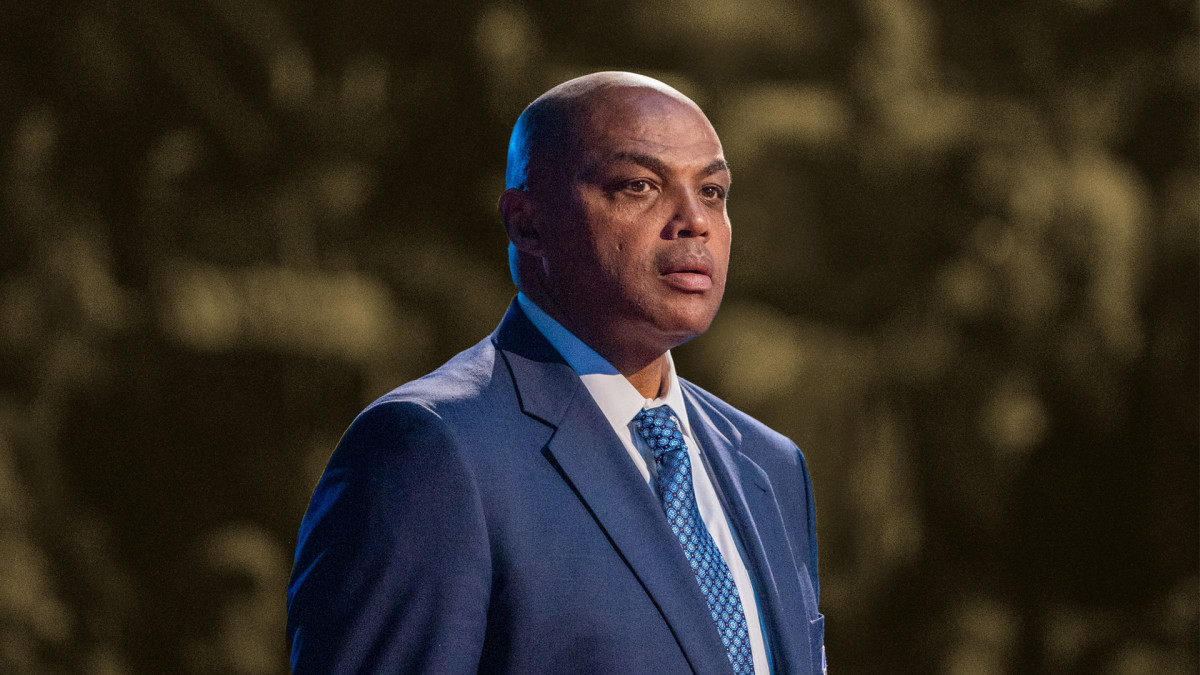
“I was able to take do some stuff for my mother and grandmother” – Charles Barkley defends taking under-the-table cash in college originally appeared on Basketball Network.
Charles Barkley never cared much for the rules — especially when those rules left college athletes broke while the NCAA cashed in.
Advertisement
Before NIL deals were legal, Barkley took $20,000 from an agent while at Auburn. He knew it broke the rules. He just didn’t care. For Barkley, it wasn’t about getting rich — it was about survival and helping his family while waiting for his NBA career to start.
“I think the most I took was like $20,000, I’m not talking about a million dollars or $100,000. $20,000 is a lot though when you have nothing I know and that made me stay in school another year $20,000 that’s not a lot of money but I was able to take do some stuff for my mother and grandmother and I had some spending money okay I’m cool I don’t have to go into the real world’,” Barkley emphasized.
Barkley thinks players didn’t receive any financial stability while the NCAA made billions off them. Hence, the agents offering them money to live their daily life in exchange for future representation seems reasonable.
Barkley vs the 2017-2018 Louisville scandal
Chuck took money from agents while at Auburn, but it was a loan that he repaid in full once he signed his NBA contract. He openly said that he sees no problem with his actions because they were necessary for him at the time.
Advertisement
“I paid the agents back,” Barkley stated.
While he received money, he also claimed many players in the 1980s were getting money from agents to stay in school rather than enter the NBA Draft, although he never mentioned any particular names.
While Barkley’s situation seems appropriate, college basketball has different ways to bend the former amateurism rules. The main scandal of the 2017/2018 season was revealed when wiretaps uncovered millions in illegal payments from brands like Adidas to recruit players to play for a college.
At the time, Louisville was under Hall of Fame head coach Rick Pitino. He allegedly bribed highly sought-after recruit Brian Bowen and his family with $100,000 to attend the school through sponsorships with Adidas, the school’s main gear sponsor. Despite claiming he had no involvement, Pitino was fired, damaging his public image.
Advertisement
Related: Michael Beasley shares the gangster way Pat Riley welcomed him to Miami: “Pulled up in a ’47 Mercury, matte black”
NIL: Good or Bad
NIL (Name, Image, and Likeness) became available in July 2021, allowing college athletes to profit from their personal brands. Since then, players across all collegiate sports have made millions of dollars.
Barkley is all for paying the players, but the recent NIL deals have been getting out of hand.
“I think we have to have a talk about college basketball. I don’t think the model of the NIL is sustainable. Listen, I want all these kids to get whatever they can get. But asking colleges to come up with $20, $30 million a year – especially some of the smaller schools – I don’t think that’s a sustainable model,” Charles expressed his opinion during a college football broadcast of his alma mater.
Advertisement
While the new NIL deals give every college $20-30 million to pay their athletes directly, Barkley thinks the long-term effect will not last.
The difference between Barkley receiving a loan from an agent to live comfortably while staying in school for another year and an athlete like Cooper Flagg earning $6 million in NIL deals is striking.
The NCAA generates billions of dollars from these athletes, and they certainly deserve a fair share of the revenue. However, Sir Charles maintains that college sports should remain amateur and that every athlete should be compensated fairly.
Related: “I hope they don’t screw with our show” – Charles Barkley reveals the only thing he is worried about when Inside the NBA moves to ESPN
This story was originally reported by Basketball Network on Jul 15, 2025, where it first appeared.
NIL
Trump set to sign executive order on national standards for college sports NIL
President Trump intends to sign an executive order in the coming days establishing national standards for the NCAA’s Name, Image and Likeness program, which has reaped millions of dollars in revenue for top college athletes, according to multiple people familiar with his plans. College athletes can now make millions before ever going pro thanks to […]
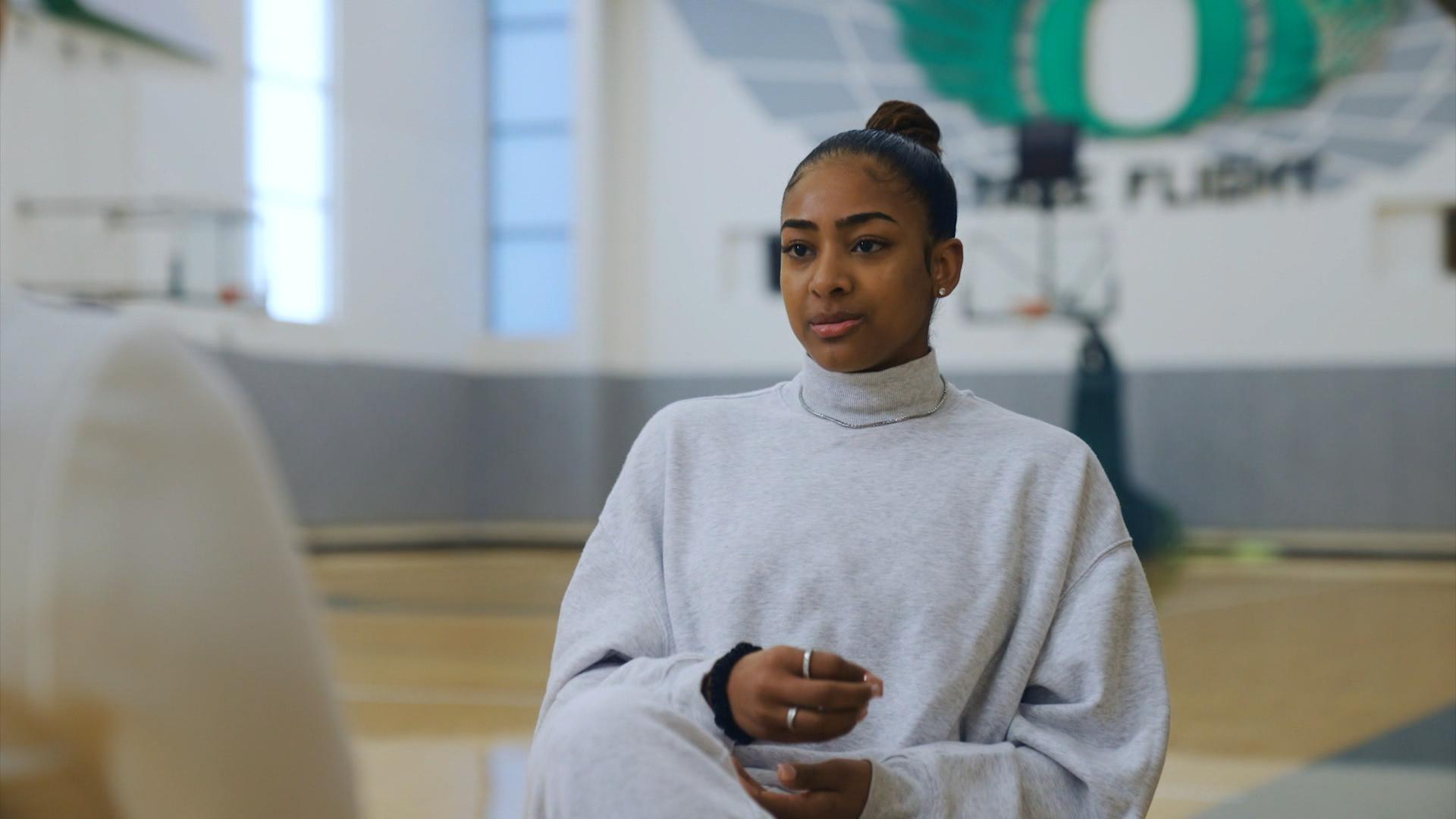
President Trump intends to sign an executive order in the coming days establishing national standards for the NCAA’s Name, Image and Likeness program, which has reaped millions of dollars in revenue for top college athletes, according to multiple people familiar with his plans.
College athletes can now make millions before ever going pro thanks to a set of NCAA rules enacted in 2021 that relaxed previous restrictions on being compensated for playing or accepting endorsement deals. Student athletes can now profit from merely showing up to play, or from jersey sales, autographs or serving as spokespeople for companies ranging from global brands to car dealerships near campus.
Mr. Trump is engaging on an issue that has quickly reshaped and, in many ways, roiled college athletics after a House subcommittee on Tuesday advanced a bill along party lines that would establish national standards for sponsorships. The legislation, called the “SCORE Act,” would supersede a patchwork of state laws regulating Name, Image and Likeness, or NIL.
While the bill has bipartisan support, there is also bipartisan concern it would give too much power to the NCAA and do little to protect the interests of college athletes.
The NCAA’s decision in 2021 to let athletes earn money from NIL deals followed years of political and legal pressure on the collegiate sports giant. For decades, the NCAA imposed steep limits on compensation for student athletes, which it argued were necessary to insulate college athletics from commercial pressures. But opponents — including many college athletes — had long argued the rules unfairly cut them out of the millions in revenue that sports like football and basketball can bring in for universities.
Last month, in a massive shakeup, a federal judge signed off on a legal settlement in which the NCAA agreed to let schools pay student athletes directly.
Trump has regularly engaged with professional and college sports of all sorts since and even before retaking office. Whether attending the storied Army-Navy football game last December or stealing the spotlight at last Sunday’s Club World Cup championship, the future of sports is a frequent presidential concern.
The White House didn’t immediately return requests for comment late Tuesday.
NIL
Caitlin Clark injury update: Fever star breaks down in tears after appearing to tweak groin
Indiana Fever star Caitlin Clark broke down in tears in the final seconds of Tuesday’s game against the Connecticut Sun after appearing to tweak a groin injury. She reached for her leg after an apparent non-contact issue. Clark was bringing the ball up the court with about 40 seconds left to play when she kicked […]

Indiana Fever star Caitlin Clark broke down in tears in the final seconds of Tuesday’s game against the Connecticut Sun after appearing to tweak a groin injury. She reached for her leg after an apparent non-contact issue.
Clark was bringing the ball up the court with about 40 seconds left to play when she kicked it inside to Kelsey Mitchell for a layup. As Connecticut called timeout, the former Iowa star was visibly in pain and reaching for her left leg as she headed toward the basket.
Once she got to the bench, Clark put a towel over her head and was visibly emotional off the bench. Replays showed she pulled up after the backdoor pass and reached for the inside of her right leg as the whistle blew.
Clark played 28 minutes in Tuesday’s 85-77 victory over the Sun, totaling 14 points, eight rebounds and seven assists. However, her shooting struggles continued as she went just 4-for-14 from the field, including 1-of-7 from three-point distance. Her lone make from downtown came in the fourth quarter.
Entering Tuesday, Clark made just 29.5% of her shots over her last six games, with the lone bright spot coming in a 19-point showing in a loss to the Las Vegas Aces. Last time out against the Dallas Wings, Clark had 14 points, but shot 4-for-12 from the field.
However, Clark is keeping things in perspective amid the rough stretch. She said it’s all about staying confident and getting just one or two shots to fall. Then, hopefully, she’ll turn things back around.
“I still probably didn’t shoot it as good as I would have liked, but I feel like it’s coming,” Clark said, via the Indianapolis Star’s Chloe Peterson. “Just trying to continue to get my legs under me. And, like I said, pregame, like I feel like I’m a couple shots away from, like, having a really good game.”
Despite the slump, Caitlin Clark is in the midst of a huge second season in the WNBA despite dealing with injuries throughout the year. She entered Tuesday’s game averaging 16.7 points to go with 9.0 assists and 4.8 rebounds. In addition, she’s preparing for her first WNBA three-point contest when the game comes to Indiana this weekend.
The Fever are scheduled to take on the New York Liberty on Wednesday at Barclays Center. That will mark the final game before the All-Star break.
-

 Technology3 weeks ago
Technology3 weeks agoPet fitness and wellness trends for a healthier and happier dog
-

 College Sports3 weeks ago
College Sports3 weeks agoWAC to Rebrand to UAC, Add Five New Members in 2026
-

 College Sports3 weeks ago
College Sports3 weeks agoA new era of Dickinson hockey begins behind the bench – The Dickinson Press
-

 Motorsports2 weeks ago
Motorsports2 weeks agoWhy Cosmetics are Making Up for Lost Time in Women’s Sports
-

 Motorsports2 weeks ago
Motorsports2 weeks agoTeam Penske names new leadership
-

 Sports1 week ago
Sports1 week agoNew 'Bosch' spin
-

 Motorsports3 weeks ago
Motorsports3 weeks agoNASCAR This Week – Patriot Publishing LLC
-

 Youtube2 weeks ago
Youtube2 weeks ago🚨 BREAKING: NBA MVP Shai Gilgeous-Alexander signs the RICHEST annual salary in league history
-

 Sports1 week ago
Sports1 week agoE.l.f Cosmetics Builds Sports Marketing Game Plan Toward Bigger Goals
-

 College Sports2 weeks ago
College Sports2 weeks agoMSU Hockey News – The Only Colors



























